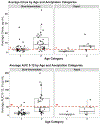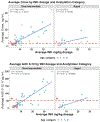Pharmacogenetic testing for NAT2 genotypes in a Tanzanian population across the lifespan to guide future personalized isoniazid dosing
- PMID: 35961094
- PMCID: PMC9884397
- DOI: 10.1016/j.tube.2022.102246
Pharmacogenetic testing for NAT2 genotypes in a Tanzanian population across the lifespan to guide future personalized isoniazid dosing
Abstract
Despite updated recommendations for weight-based isoniazid dosing in children with drug-susceptible tuberculosis (TB) and higher dose isoniazid in regimens for adults with drug-resistant TB, individual pharmacokinetic variability can lead to sub-target isoniazid exposure. Host pharmacogenetics and isoniazid exposure remain understudied, especially in the East African population. We therefore employed a real-time polymerase chain reaction (qPCR) assay system to test genomic DNA extracted from saliva samples targeting the NAT2 gene responsible for isoniazid metabolism to describe the frequency of human single nucleotide polymorphisms in NAT2 within populations of children and adults in Tanzania, ascribe those polymorphisms to acetylator phenotype, and correlate to serum isoniazid exposures. In adults treated with higher dose isoniazid, genotypes with a predicted allelic phenotype of slow or intermediate acetylation were able to achieve a 0.41 μg/mL higher Cmax (p = 0.018) and a 2.9h*μg/mL higher AUC0-12 (p = 0.003) per mg/kg increase in isoniazid dosage versus adults with rapid acetylation phenotype. A similar relationship was not found in the younger age population as predicted by timing of NAT2 maturation. This saliva based qPCR assay was fieldable to guide personalized isoniazid dosing in adults but not young children that may not have full NAT2 maturation and activity.
Keywords: Acetylation; Isoniazid; N-acetyltransferase; Pharmacogenetics; Pharmacokinetics.
Copyright © 2022. Published by Elsevier Ltd.
Figures



References
Publication types
MeSH terms
Substances
Grants and funding
LinkOut - more resources
Full Text Sources
Medical

